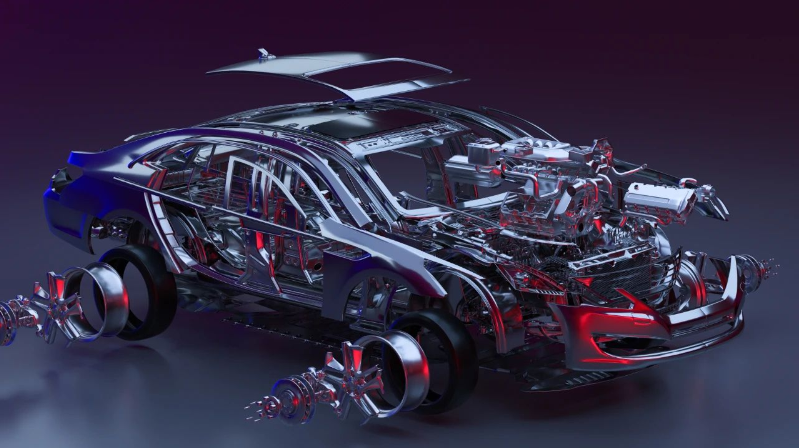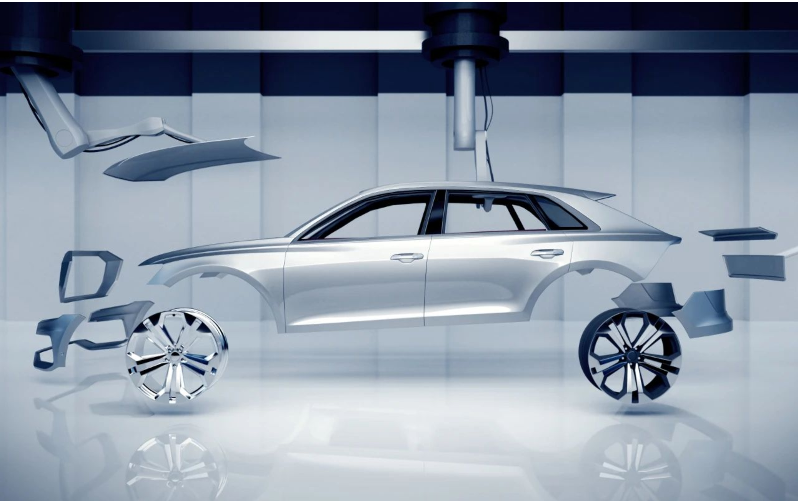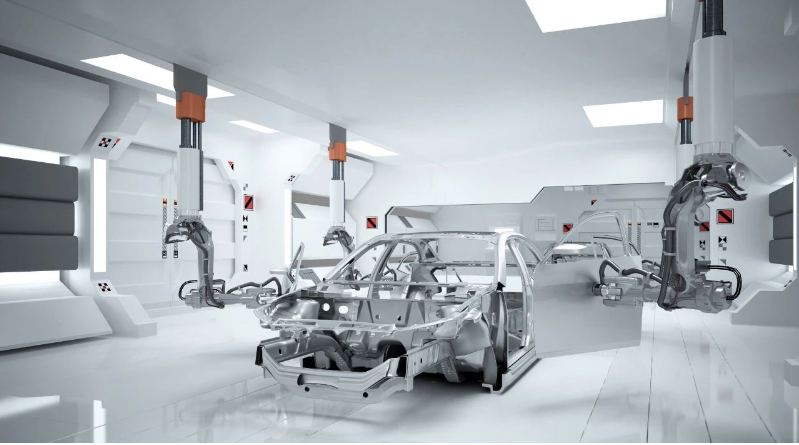Amid fluctuating international trade rules, high inflation, and soaring interest rates, the average transaction price of new cars in the US has risen to nearly $50,000 (approximately 360,000 RMB), significantly raising the purchasing threshold for consumers. In response to this challenge, automakers are employing various strategies to control costs and stabilize prices, with 'simplifying configurations' emerging as a practical survival strategy. This includes replacing automatic climate control with manual systems, using synthetic materials instead of leather for steering wheels, eliminating high-end audio systems, and reducing wheel sizes, among other changes. Tesla is pushing its base model Cybertruck, removing nearly $10,000 (approximately 72,000 RMB) worth of standard features, switching from all-wheel drive to rear-wheel drive, replacing leather seats with fabric, canceling the rear touch screen, and downsizing wheels from 20 inches to 18 inches. Mazda and Hyundai are also introducing or re-launching entry-level models, while Mini has launched the limited 'Oxford Edition,' bundling core functions with unique designs at prices several thousand dollars lower than the base model. The strategy of reducing features aims to provide options for consumers who wish to buy new cars but face tighter budgets, particularly those looking to avoid risks in the used car market. According to AutoPacific's Future Attributes Demand Study (FADS), which surveyed over 14,000 potential new car buyers, the core demand of the 'pragmatic' group with budgets of $25,000 to $35,000 (approximately 180,000 to 250,000 RMB) is clear: 'subtraction' is key, with luxury features giving way to basic functions. The study indicates that for these budget-conscious buyers, luxurious seating interiors, extravagant exterior kits, and immersive cockpit technology are not as significant as front-wheel drive, basic sound systems, fabric seats with various manual adjustments, and traditional mechanical or analog instrument panels, which are highly favored. It appears that flashy upgrades are no longer in vogue; 'sufficient is good' has become the mantra. However, regarding safety features, the 'pragmatic' group firmly views them as essential needs, with demand for passive safety features (such as front and rear parking radar, at about 29%-32%) and active safety features (like rear cross-traffic alert with automatic braking, at about 30%-32%) not significantly differing from those with higher budgets. Interest in popular high-level intelligent driving features, such as advanced driver assistance systems capable of taking over driving tasks (like lane-keeping adaptive cruise control), is notably lower among the 'pragmatic' group, by about 6%-7%. In the 'top 10 desired car features,' the demands of the 'pragmatic' buyers are almost identical to those of potential buyers with budgets exceeding $35,000, but the order differs. For example, about 34% of 'pragmatic' buyers want a sunroof/panoramic sunroof, ranking it 6th on their demand list, while buyers with higher budgets are more focused on features like driver seat memory, a 110V power source inside the vehicle, and rear window sunshades. Robby DeGraff, product and consumer insights manager at AutoPacific, suggests that in the face of economic uncertainty, automakers need to re-evaluate the standard feature lists for models in the $25,000 to $35,000 range. By cutting some non-core high-cost features, they can better meet the limited budgets and core demands of their target audience. AutoPacific also notes that potential consumers looking to buy new cars in the $25,000 to $35,000 range are primarily from the millennial generation (31%) or baby boomer generation (29%), with a median household income of about $50,000. Over half (57%) of them are women, and they mostly live in suburban areas without children. More than a third (35%) are first-time buyers/renters of new cars. They tend to be conservative and pragmatic, focusing on fixed expenses like monthly payments. Their daily driving mileage is below 32 kilometers, mainly for commuting, long-distance driving, leisure driving, and highway conditions, with daily usage typically including pets and one adult passenger, resulting in low rear seat usage. Regarding their 'ideal vehicle,' 'pragmatic' consumers show a higher acceptance for sedans and prefer mature, reliable gasoline engines, although 88% of them already own gasoline cars, only 20% hope their new car will be a hybrid, and 5% would choose a pure electric vehicle. In terms of appearance, they reject LED welcome lights, illuminated brand logos, or oversized glass sunroofs; inside, fabric seats with manual adjustments are preferred, with an emphasis on practicality over design. They prefer to retain physical buttons or knobs, equipped with traditional instrument panels and appropriately sized central control screens, while they do not have a strong requirement for built-in navigation due to their habit of using smartphone connectivity. The 'pragmatic' group views heads-up displays (HUD), high-end brand audio systems (like Bose, Harman Kardon), and deeply connected services requiring additional subscription fees as 'dispensable' features. In contrast, features like wireless charging pads, front seat heating/cooling, universal 110V power outlets, driver seat memory functions, and certain active safety features (like rear cross-traffic alert with braking, rear automatic braking, lane change assistance, rain-sensing wipers) are seen as 'nice to have but not essential.' Ed Kim, president and chief analyst at AutoPacific, states that in the current economic environment, ensuring the 'pragmatism' and 'affordability' of entry-level and mainstream mid-range models is crucial for establishing long-term relationships with price-sensitive consumers. However, automakers still need to upgrade configurations across all levels to offer high-end features that can lead entry-level buyers towards higher-end models in the future. The logic behind 'base models' in China differs significantly from that in the US. While US automakers and consumers seek balance through 'feature reduction,' the market dynamics in China for the 180,000-250,000 RMB price range (comparable to the $25,000-$35,000 range in the US) are entirely different. In China, this price segment is a core battleground for A+ class sedans, mainstream compact/mid-size SUVs, and some high-value hybrid vehicles, leading to intense competition among automakers. They are striving to offer consumers more advanced configurations, coupled with a stronger demand for technology and smart connectivity among Chinese consumers. As a result, even the 'base version' in this price range typically includes large screens, basic intelligent driving features (such as ACC + AEB), 4G connectivity, and mobile app controls, which starkly contrasts the minimalistic approach of 'analog instruments + buttons + no navigation' indicated by US surveys. Furthermore, this price range is a crucial battlefield for China's new energy vehicles, especially plug-in hybrids/range extenders, where automakers aggressively standardize smart cockpits and driving assistance features to create core competitiveness. Therefore, for consumers in this price range in China, practicality, reliability, and high cost-effectiveness are foundational, and merely 'reducing configurations and prices' is less attractive; they need to emphasize the brand's core values: reliable electric systems, practical space, rich and useful configurations, good reputation, and after-sales service. They require both 'visible affordability' and 'usable configurations.' The global uncertainty in the automotive market is prompting a return to rationality in car consumption; whether in the US or China, the 'pragmatic' group within the $25,000-$35,000 (USD) / 180,000-250,000 (RMB) price range is crucial. Their pursuit of 'pragmatism,' 'reliability,' and 'high cost-effectiveness' is central. However, there are significant differences between US and Chinese consumers regarding the definition and expectations of 'base models'—the US leans towards a minimalist pragmatism of 'sufficient is good,' while China requires a balanced value sense of 'practicality above all, with technology and configurations being indispensable.' Automakers need to deeply understand the unique needs of local target users and find a subtle balance between controlling costs and providing core value that aligns with local market logic. In the Chinese market, the competition over the value of 'base models' is particularly intense, with the outcome profoundly testing automakers' insights and ability to meet the real needs of local consumers. Those who can create high-value 'cost-effective kings' that truly meet the demands of the 'pragmatic' group will win valuable market share and customer loyalty in a challenging market environment.
US Automakers Simplify Features to Meet Consumer Budgets Amid Economic Pressures

Images


Share this post on: